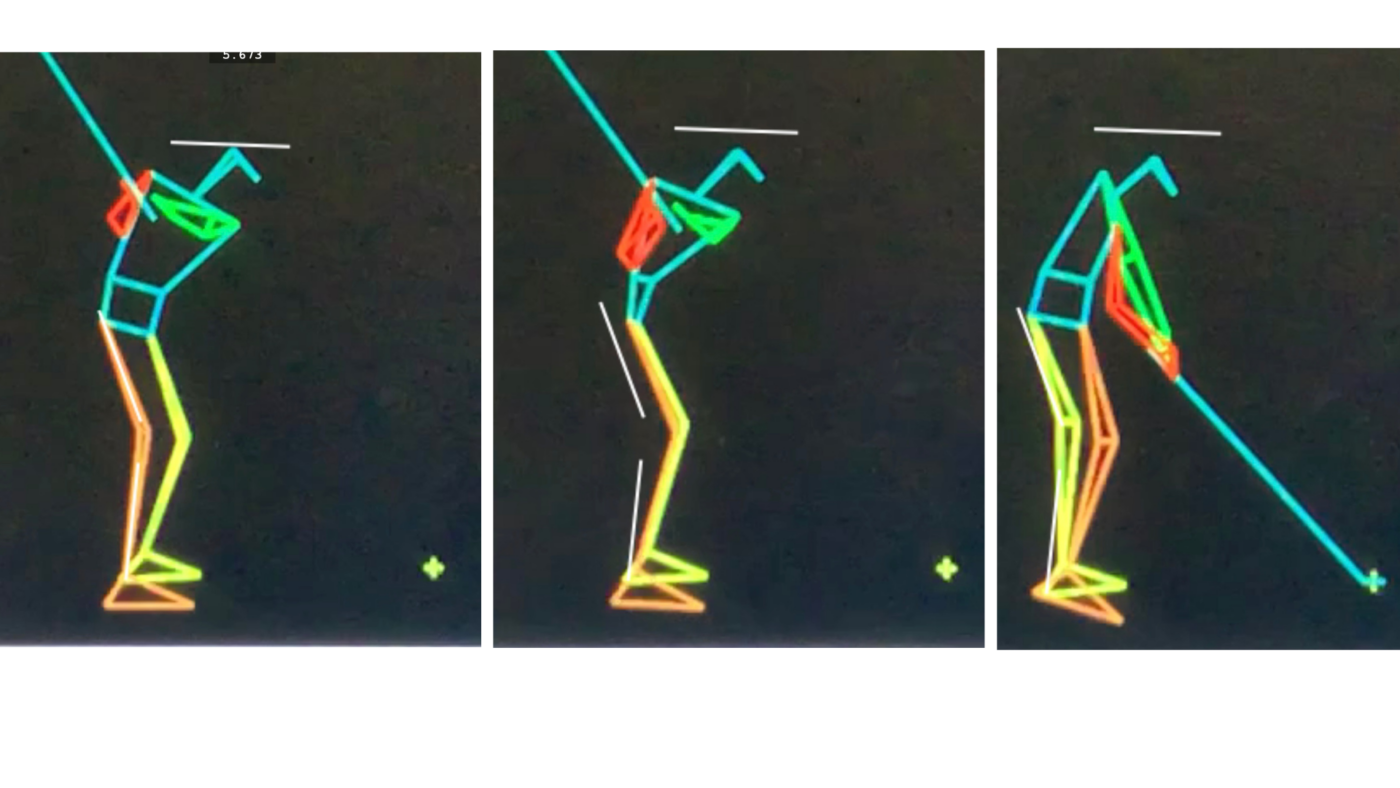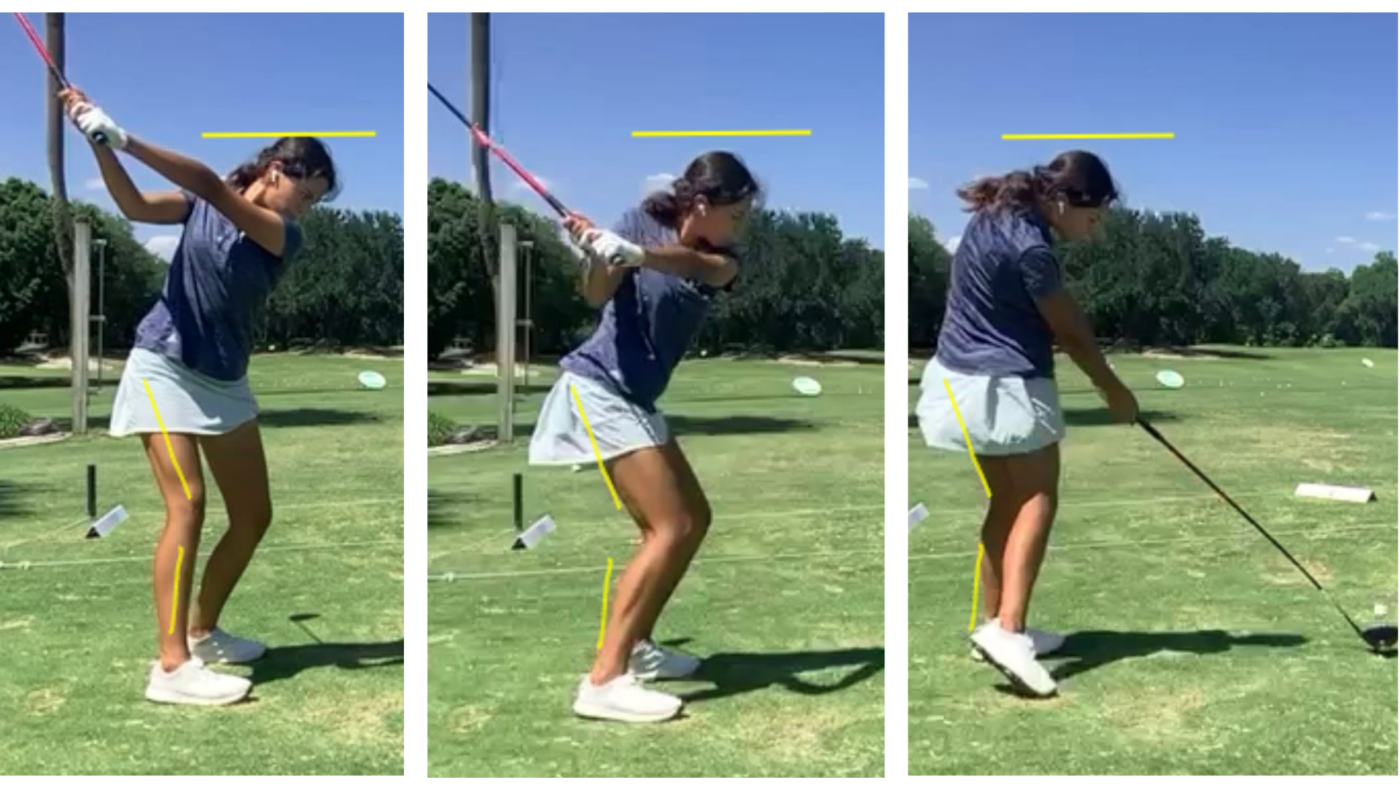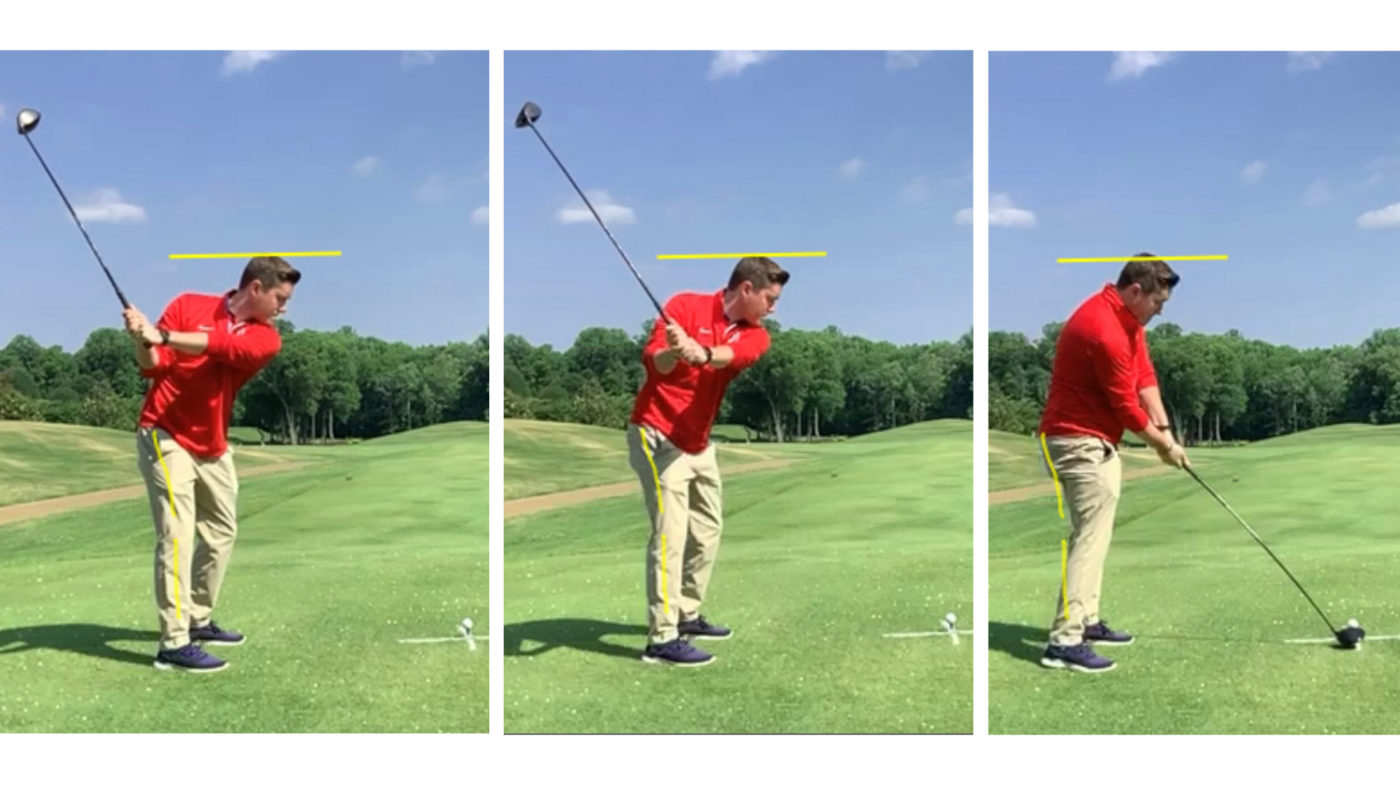Every golfer wants more distance, and the key might be right under your feet. The vertical force in your golf swing—a dynamic up-down-up movement—can dramatically increase your clubhead speed and, consequently, your shot distance.
The Jumping Principle
Think of your golf swing like a vertical jump. Elite athletes and tour pros use a countermovement technique that primes the body for explosive power. This isn’t just about strength; it’s about timing, rhythm, and precise muscular engagement.
What Vertical Force Looks Like
At the transition point of the swing (moving from backswing to downswing), top players exhibit a subtle but crucial downward movement. This isn’t a sway or lateral slide, but a controlled lowering of the body’s center of mass. Imagine preparing to jump—you first dip down (unweighting the body) slightly before explosively extending upward. The three images below show a stick figure model of best PGA Tour players, an elite college player and an average handicap golfer. I placed lines on the head and the trail leg to show how vertical movement is a result of good lower body (legs and hip) movement
Figure Comparison: Vertical Force in Action
Stick Figure Model: Illustrates classic vertical movement mechanics

Elite College Player: Demonstrates precise, powerful vertical force technique

Amateur Golfer: Shows limited lower body engagement

Pro vs. Amateur: The Vertical Movement Difference
- Professional Golfers: Demonstrate a pronounced up-down-up leg movement
- Tiger Woods and Rory McIlroy showcase more extreme versions of this technique
- Adam Scott exhibits a more subtle, refined vertical force application
- Amateur Golfers: Often miss this critical movement
- Minimal lower body engagement
- Swing dominated by upper body and arms
- Reduced clubhead speed as a result
How to Develop Vertical Force
- Timing is Everything
- The vertical movement begins at swing transition
- Ends close to impact
- Too early or too late disrupts power generation
- The Countermovement
- Slightly lower your body at transition
- Prepare like you’re about to jump
- Use this to load energy into your legs
- Lead Leg Extension
- As you approach impact, extend your lead leg
- This extension creates additional vertical force
- Translates directly into clubhead speed
Performance Benefit
Increasing vertical force isn’t just about power—it’s about efficiency. I use clubhead speed as an overall indicator of swing quality. In my experience, I have observed that as clubhead speed increases, shot accuracy often improves simultaneously.
Practice Tips
- Click here to watch my detailed You Tube video demonstration of this vertical movement pattern
- Use video analysis to track your vertical movement
- Focus on feeling the subtle up-down-up rhythm with the metronome
- Start slow, then gradually increase speed
By understanding and implementing the vertical force principle, you’ll transform your golf swing from a mere arm-driven motion to a full-body, power-generating movement.
Remember: Distance isn’t about muscle—it’s about mechanics.
